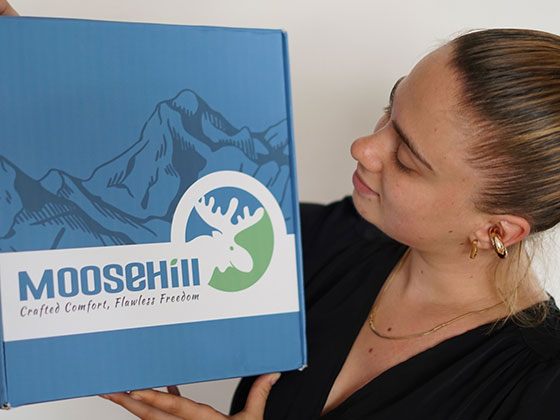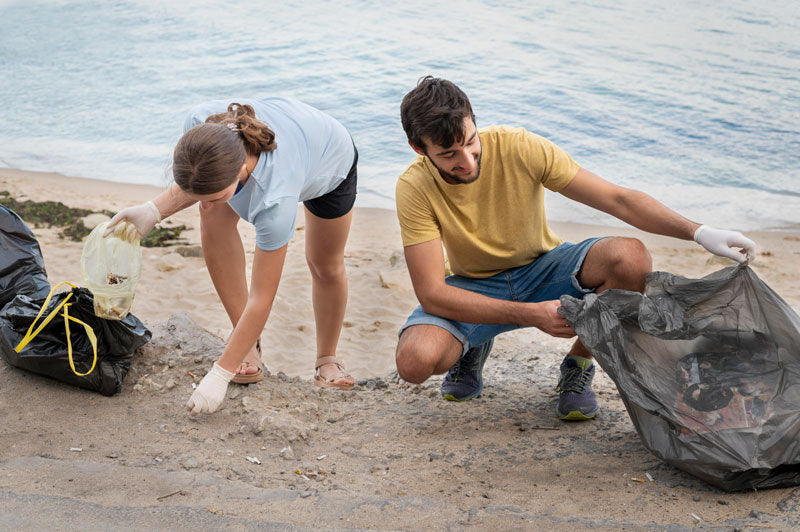Sfaturi esențiale pentru protecția genunchilor în timpul drumețiilor
Drumeția este o activitate minunată în aer liber care îți permite să te conectezi cu natura și să te provoci fizic. Cu toate acestea, este important să îți protejezi genunchii în timp ce drumeți pentru a evita accidentările și a asigura o excursie reușită. În acest articol, îți vom oferi sfaturi esențiale pentru a-ți optimiza experiența de drumeție și a-ți proteja genunchii.
Sfaturi pentru protecția genunchilor:
-
Mențineți o aliniere corectă a corpului:
Când faci drumeții, amintește-ți că nu este vorba doar despre mișcarea picioarelor tale. Acordă atenție mișcării întregului tău corp. Leagănă-ți brațele pentru a te echilibra și ajustează-ți mersul. Menține-ți spatele drept, cu umerii relaxați și lăsați. Respiră adânc prin abdomen și asigură-te că picioarele tale ating solul cu toate părțile tălpilor. -
Plasarea atentă a picioarelor:
Asigurați-vă că picioarele dvs. fac contact complet cu solul în timp ce mergeți pe jos. Începeți prin a ateriza pe călcâi și apoi rostogoliți-vă înainte pe degete. Această tehnică ajută la distribuirea uniformă a impactului și reduce tensiunea asupra genunchilor. -
Găsește Ritmul Potrivit:
Mențineți un ritm confortabil în timpul drumețiilor. Vizați să mergeți și să vorbiți fără a simți că rămâneți fără suflare. Evitați să depășiți o frecvență cardiacă de 90-120 de bătăi pe minut pentru a preveni suprasolicitarea. -
Exersează respirația profundă:
Concentrează-te pe menținerea unui model de respirație constant și uniform pe parcursul drumeției tale. Respirațiile profunde oferă mușchilor tăi un aport adecvat de oxigen și te ajută să rămâi energizat. -
Acordați atenție posturii:
Menține-ți umerii relaxați și spatele drept în timpul drumeției. Respirația abdominală profundă te va ajuta să menții o postură bună și să reduci stresul asupra genunchilor.

Principii Cheie pentru Protecția Genunchiului:
-
Controlează-ți viteza:
Evită să te forțezi prea mult și să mergi într-un ritm excesiv. Acest lucru îți poate epuiza energia și îți poate împiedica progresul. Dacă faci drumeții cu un grup, găsește un tovarăș care să împărtășească viteza ta pentru a asigura o experiență confortabilă și plăcută. -
Prioritizează Cunoștințele și Experiența:
Când începi, concentrează-te pe creșterea treptată a duratei de mers pe jos, mai degrabă decât să încerci să parcurgi distanțe lungi. Această abordare îți permite să îți înțelegi abilitățile fizice și să îți ajustezi intensitatea în consecință. -
Învață să te odihnești:
Odihna este crucială în timpul drumețiilor în aer liber. Nu te suprasolicita, deoarece acest lucru poate duce la rezultate din ce în ce mai slabe. Ajustează-ți timpul de odihnă în funcție de nevoile tale personale și de condiția ta fizică. -
Adoptă tehnici corecte de mers:
Fiecare are propriul stil de mers, iar este important să găsești o modalitate confortabilă și eficientă de a merge în timpul drumețiilor. Acest lucru îți permite să îți folosești energia eficient și să minimizezi efortul asupra genunchilor. -
Replenishment la timp:
În timpul unei drumeții, corpul tău arde o cantitate semnificativă de calorii. Pentru a-ți menține nivelul de energie, asigură-te că te rehidratezi cu apă și mâncare la intervale regulate. Ia în considerare să bei mai multă apă înainte de a urca pante abrupte și, dacă este necesar, adaugă sare în apa ta de băut sau alege băuturi funcționale atunci când transpiri excesiv în vreme caldă. -
Autoevaluare:
Înainte de a începe o drumeție în aer liber, evaluează-ți cu exactitate condiția fizică și abilitățile. Ia în considerare dacă poți ține pasul cu ritmul colegilor tăi sau dacă poți face față activităților planificate fără a-ți suprasolicita genunchii. Evită suprasolicitarea și rezistă impulsului de a recupera timpul pierdut dacă rămâi în urmă, mai ales în secțiunile de coborâre. -
Consolidarea mușchilor picioarelor:
Mușchii bine dezvoltați ai picioarelor pot allevia presiunea asupra genunchilor și pot minimiza riscul de accidentări. Concentrează-te pe exerciții care întăresc cvadricepșii (mușchii din fața coapsei) și ligamentele cruciate. Evită posturile incorecte în timpul exercițiilor pentru a preveni tensiunea și accidentările inutile. -
Prioritizează Protecția Genunchiului:
Articulația genunchiului este vulnerabilă la daune, așa că este esențial să prioritizăm protecția acesteia. Ia în considerare utilizarea bețelor de drumeție și a genunchierelor pentru a oferi suport și a reduce stresul asupra genunchilor tăi. Bețele de drumeție pot distribui eficient greutatea și pot reduce impactul asupra genunchilor, în timp ce genunchierele oferă o amortizare și un suport suplimentar.

Sfaturi suplimentare:
-
Coborâți în siguranță:
Când cobori, evită să alergi sau să sari. În schimb, ia-o încet și fii precaut. Tehnica corectă implică mutarea centrului tău de greutate ușor înapoi și coborârea acestuia. Asigură-te că piciorul din față este bine fixat înainte de a-ți transfera greutatea. Menține întotdeauna un picior susținut pe sol pentru stabilitate. -
Reduceți greutatea:
Înainte de a începe drumeția, evaluează-ți capacitatea și împachetează corespunzător. Chiar și atunci când urci un munte mic, este normal să mergi pe jos mai mult de patru ore. Ca regulă generală, limitează greutatea rucsacului la nu mai mult de o pătrime din greutatea corpului tău. Când cobori, controlează-ți ritmul pentru a-ți proteja genunchii. Chiar și în cazuri excepționale, încărcătura nu ar trebui să depășească o treime din greutatea corpului tău. -
Încălzire:
Înainte de a merge pe jos, angajați-vă în activități pregătitoare, cum ar fi întinderea pentru a încălzi articulațiile, mușchii și ligamentele. De asemenea, puteți masa marginile inferioare ale genunchilor cu degetele pentru a promova lubrifierea articulațiilor. -
Utilizați echipamentele corespunzătoare:
Investește în încălțăminte confortabilă și cu absorbție de șocuri, potrivită pentru drumeții. Terenurile moi, cum ar fi iarba, pantele de pietriș și zăpada, sunt mai prietenoase cu genunchii. Cu toate acestea, asigură-te că încălțămintea ta oferă o bună aderență și fii atent la cei care merg în spatele tău pe drumurile de pietriș. -
Evitarea blocării articulațiilor:
Când coapsele tale devin obosite, este comun să îți blochezi inconștient articulațiile prin întinderea picioarelor. Deși acest lucru eliberează temporar presiunea asupra mușchilor coapsei, poate tensiona genunchii și poate duce la leziuni precum întinderi ale genunchiului, leziuni prin impact, întinderi ale gleznei și entorse. -
Urmăriți Semnele Naturale:
Acordați atenție reperele naturale de-a lungul traseului dvs. de drumeție, cum ar fi râuri, lacuri, pereți de stâncă sau dealuri distinctive. Aceste semne vă pot ajuta să găsiți drumul înapoi dacă vă pierdeți, reducând distanțele inutile parcurse. -
Dezvoltarea Judecății Direcționale:
Dacă nu ai o busolă, poți folosi soarele pentru a-ți determina direcția aproximativă. Când soarele strălucește, observă-ți umbra pentru a-ți face o idee despre direcție. -
Managementul timpului:
Poartă un ceas în timpul drumețiilor pentru a ține evidența timpului. Acest lucru îți permite să estimezi distanța rămasă, să îți distribui energia în mod înțelept și să îți ajustezi perioadele de odihnă. Dacă îți dai seama că nu vei ajunge la destinație în timpul planificat, caută un loc de campare potrivit pentru a evita drumețiile pe timp de noapte. -
Reglați-vă ritmul:
Ajustați-vă regulat ritmul în timpul drumețiilor. Făcând pași mari, puteți suprasolicita genunchii și provoca acumularea de acid lactic, ceea ce duce la durere și oboseală. Alegeți pași mai mici și un ritm mai lent pentru a reduce acumularea de acid lactic. Acest lucru promovează, de asemenea, o mișcare mai bună a genunchilor și o eliberare mai rapidă a acidului lactic. Evitați să vă perturbați ritmul natural făcând pași mari pe teren plat sau accelerând inutil.
Scopul drumeției nu este doar de a parcurge o distanță specifică, ci mai degrabă de a găsi un stil de mers care ți se potrivește și face ca trupul tău să se simtă confortabil. Urmând aceste sfaturi și principii esențiale, poți proteja genunchii, îmbunătăți experiența ta de drumeție și asigura o călătorie sigură și plăcută în aer liber.
--- SFÂRŞIT ---
Pentru mai multe detalii despre Imbracaminte pentru drumetii , vă rugăm să faceți clic Aici să alegi produsele cele mai potrivite!

【Sfaturi pentru drumeții】
· Sfaturi pentru drumeții: Care sunt cele mai bune alimente pentru drumeții?
· Sfaturi pentru drumeții pentru începători
· Regulile de Aur pentru Drumeții în 2024
· Top 7 Cele Mai Comune Greșeli Când Mergi pe Jos
【Sfat pentru ciclism】
· Ce pantaloni scurți poartă bicicliștii de munte?
· De ce sunt pantaloni scurți pentru mountain bike căptușiți în loc de șezut?
· Confortabile și Stilate: 5 Sfaturi de la Experți pentru Șorturi de Bicicletă
【Sfat de golf】
· Porți pantaloni sau șorturi la golf?
· Ghid Rapid: Alegerea Pantalonilor de Golf Perfecți
· 4 Sfaturi pentru a alege eficient îmbrăcămintea și accesoriile de golf
【Sfaturi pentru schi și zăpadă】
· Ce pantaloni sunt buni pentru zăpadă
· Pot fi folosite pantalonii de zăpadă ca pantaloni de ploaie?










